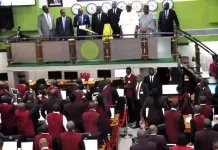Short-term benchmark interest rates have continued to decline, driven by improved liquidity levels in the financial system. Borrowing through the Central Bank of Nigeria’s (CBN) Standing Lending Facility (SLF) has also slowed down in the new week.
Market analysts note that interbank rates are typically pressured higher when liquidity levels are insufficient to meet funding needs. In October, banks accessed over ₦8 trillion through the CBN’s lending window due to tight liquidity conditions in the money market.
This liquidity strain kept interbank rates elevated, exceeding 32% toward the month’s end. Last week, banks in deficit positions again relied on the borrowing window, withdrawing ₦3.6 trillion to fund operations.
Analysts highlighted that a major outflow of approximately ₦1.45 trillion related to Open Market Operations (OMO) bills auctioned earlier in November significantly drained liquidity. This auction created tighter conditions in the financial system, particularly in the absence of other major inflows.
On a brighter note, many money market deposit accounts saw increased returns, according to a report cited by Bizwatch Nigeria. In the money market, the Nigerian Interbank Offered Rate (NIBOR) showed mixed movements across maturities, as reported by Cowry Asset Management in a Tuesday update.
The firm noted that the overnight NIBOR dropped to 27.25%, signaling improved liquidity. Similarly, the Overnight Policy Rate (OPR) fell by 62 basis points to 26.56%, while the Overnight (O/N) rate declined by 78 basis points to 27.11%, according to FMDQ platform data.
Analysts attributed these declines to an influx of liquidity in the financial system, which continues to ease interbank rates.














